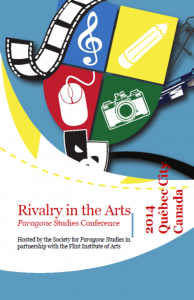Abstract:
4000 years of art history is looking down on the small painter:
Jean Léon Gérôme’s desperate battle in favour of academic painting.
In the slip stream of Ingres, Jean Léon Gérôme was a champion for academic painting. His ethnographic Orientalism promised ‘a wave of the future’, and the remarkable episodes in highly original compositions convinced at least himself of his qualities as a modern painter. Not everybody agreed.
The Salon des Refusés served as a new stage for the Impressionists. ‘Humbugs’, judged Gérôme, and their work: ‘insipid, badly executed and stupid beyond expression’. He suited the action to the word and started drawing classes for ‘serious painters-to-be’.
Critics were not amused and blamed him for expressing both cold, emotionless scenes as political ideas through his narrative paintings. Gérôme stroke back by decapitating his opponents: their features could be recognized in the pile of Rebel Beys’ heads Gérôme painted at the Mosque El-Assaneyn in 1866.
Gérôme was entitled to speak: in a reaction on the Salon du Refusés, three studios were opened at the École des Beaux-Arts: Gérôme became one of the new professors. And especially in the United States the prices for his canvases rose excessively.
Yet a single year later the tide is turning. Not only did the master of the pictorial style himself –Ingres- die, on the World Exhibition the Impressionists established their success with an impressive exhibition. On top Gérôme’s master piece ‘Les Gladiateurs’ returned from the United States after bad press. Did time prove him wrong? Was the ‘unfinished’ Impressionist style the new way of painting?
Gérôme now had to to sing another tune. In a more poetical statement he still reacted on the artistic developments. In this paper I shall argue that in ‘Napoleon before the Sphinx’ Gérôme painted Napoleon as a self-portrait. Facing the ancient Sphinx he meets the sturdy personification of the tradition of art. Confirming the academic style as the true development. Wrongfully.
Program:
